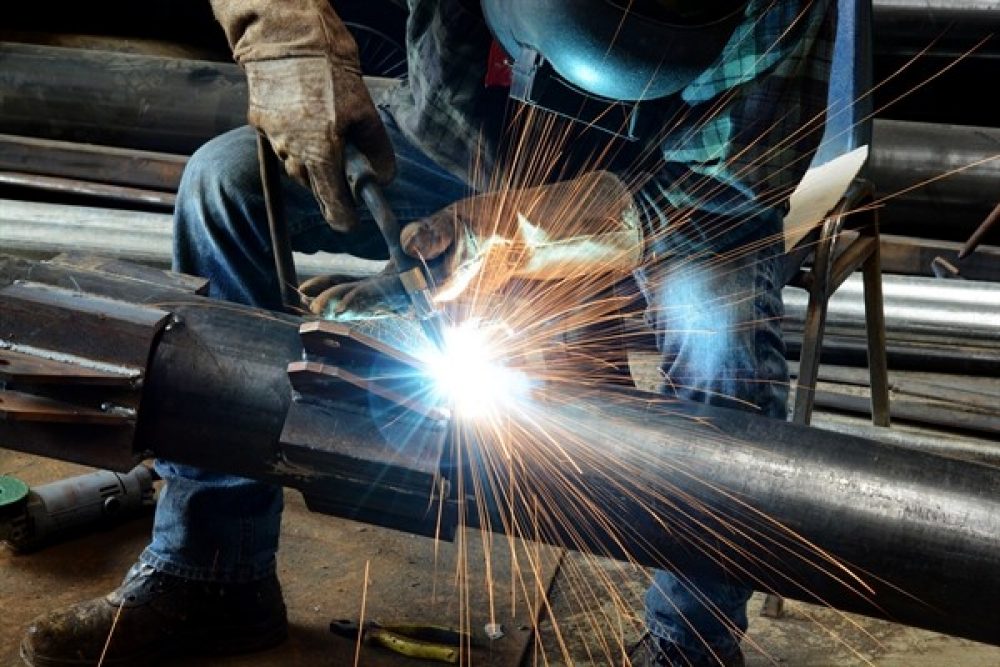Opening the Power of Welding WPS: Methods for Efficiency and Safety And Security in Construction
In the realm of construction, Welding Treatment Specs (WPS) stand as the foundation of welding procedures, dictating the essential steps for achieving both effectiveness and safety and security in the construction process. Recognizing the complexities of WPS is paramount to using its full capacity, yet many companies struggle to unlock the real power that lies within these records (welding WPS). By delving right into the methods that optimize welding WPS, a globe of enhanced efficiency and heightened security waits for those ready to discover the nuances of this crucial aspect of construction

Significance of Welding WPS
The value of Welding Treatment Specifications (WPS) in the construction market can not be overemphasized. WPS function as an important roadmap that details the essential actions to ensure welds are carried out constantly and appropriately. By defining vital criteria such as welding procedures, products, joint styles, preheat temperature levels, interpass temperature levels, filler steels, and post-weld warm therapy requirements, WPS offer a standardized method to welding that improves effectiveness, top quality, and safety and security in manufacture procedures.
Adherence to WPS aids in attaining uniformity in weld quality, decreasing the possibility of problems or structural failures. This standardization also helps with compliance with industry regulations and codes, guaranteeing that fabricated structures meet the required safety and security criteria. Furthermore, WPS paperwork allows welders to reproduce effective welding treatments, resulting in constant results across different tasks.
In significance, the thorough growth and rigorous adherence to Welding Procedure Specifications are extremely important for maintaining the stability of welded structures, securing versus prospective risks, and promoting the online reputation of manufacture business for providing top notch product or services.
Key Components of Welding WPS

Enhancing Efficiency With WPS
When optimizing welding operations, leveraging the essential aspects laid out in Welding Treatment Specifications (WPS) becomes vital for making the most of and enhancing procedures efficiency. One means to boost effectiveness with WPS is by thoroughly picking the ideal welding criteria.
Frequently evaluating and upgrading the WPS to integrate any lessons found out or technical advancements can additionally contribute to efficiency enhancements in welding operations. By welcoming the guidelines established forth in the WPS and constantly looking for methods to optimize procedures, fabricators can attain higher performance levels and premium end results.
Ensuring Safety And Security in Construction

Guaranteeing safety in manufacture includes a diverse approach that incorporates different elements of the welding procedure. Welders have to be furnished with suitable equipment such as safety helmets, gloves, and safety garments to reduce threats associated with welding activities.
Additionally, adherence to correct air flow and fume removal systems is essential in keeping a healthy and balanced work setting. Welding fumes include dangerous materials that, if inhaled, can posture significant wellness threats. Applying reliable air flow steps aids to lessen exposure to these harmful fumes, promoting breathing health among employees.
Regular tools maintenance and assessments are also necessary for ensuring security in manufacture. Defective equipment can result in crashes and injuries, highlighting the relevance of prompt fixings and regular checks. By focusing on precaution and check my source cultivating a culture of understanding, manufacture facilities can create a efficient and safe and secure workplace for their workers.
Applying WPS Ideal Practices
To boost functional effectiveness and make certain top quality outcomes in fabrication processes, integrating Welding Treatment Requirements (WPS) ideal practices is paramount - welding WPS. Executing WPS finest methods entails thorough preparation, adherence to sector standards, and continuous monitoring to guarantee optimal results. Firstly, picking the suitable welding procedure, filler material, and preheat temperature specified in the WPS is important for accomplishing the preferred weld quality. Second of all, ensuring that qualified welders with the needed certifications perform the welding treatments according blog here to the WPS standards is necessary for uniformity and dependability. Consistently updating and examining WPS records to reflect any process renovations or changes in products is additionally a vital finest technique to keep accuracy and relevance. In addition, giving detailed training to welding workers on WPS requirements and ideal methods promotes a culture of safety and security and high quality within the fabrication setting. By carefully executing WPS best techniques, helpful hints producers can streamline their procedures, reduce errors, and supply exceptional items to satisfy client assumptions.
Conclusion
In verdict, welding WPS plays a critical role in guaranteeing effectiveness and security in construction procedures. By adhering to these methods, companies can open the complete potential of welding WPS in their manufacture operations.
In the world of manufacture, Welding Treatment Requirements (WPS) stand as the foundation of welding procedures, dictating the necessary actions for achieving both performance and safety in the construction procedure. By specifying necessary criteria such as welding procedures, products, joint styles, preheat temperature levels, interpass temperatures, filler metals, and post-weld heat treatment needs, WPS give a standard technique to welding that improves effectiveness, high quality, and safety in fabrication procedures.

When optimizing welding procedures, leveraging the vital aspects described in Welding Procedure Requirements (WPS) comes to be important for maximizing and simplifying processes productivity. (welding WPS)
Comments on “Creating a Welding WPS: Step-by-Step Instructions for Professionals”